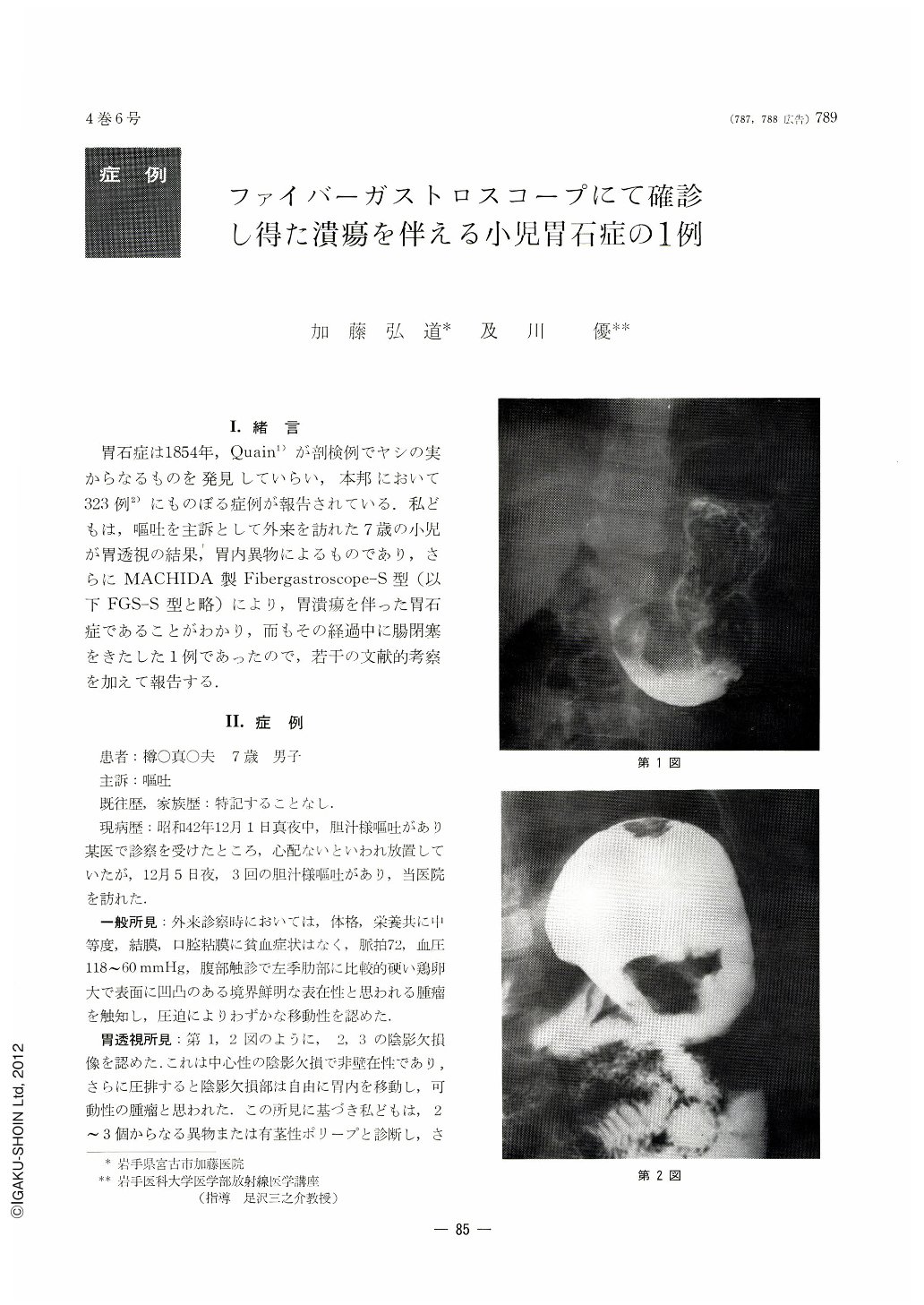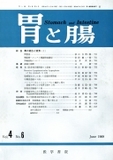Japanese
English
- 有料閲覧
- Abstract 文献概要
- 1ページ目 Look Inside
Ⅰ.緒言
胃石症は1854年,Quain1)が剖検例でヤシの実からなるものを発見していらい,本邦において323例2)にものぼる症例が報告されている.私どもは,嘔吐を主訴として外来を訪れた7歳の小児が胃透視の結果,胃内異物によるものであり,さらにMACHIDA製Fibergastroscope-S型(以下FGS-S型と略)により,胃潰瘍を伴った胃石症であることがわかり,而もその経過中に腸閉塞をきたした1例であったので,若干の文献的考察を加えて報告する.
Since in 1854 Quain found at autopsy a phytobezoar consisting of coconut fiber and string in a human stomach, 323 such have been reported up till now in this country as well. When foreign bodies are found in an adult, gastroscopy is helpful in their diagnosis, whereas younger children suspected of bezoar in their stomachs can not undergo gastroscopic examination with safety. According to Murakami et al., the lowest age limit for gastroscopy is thirteen, but they point out that, if fibergastroscope is used instead, endoscopic examination may be feasible to children below that age. The authors have recently encountered a case of phytobezoar in a boy of seven, to whom fibergastroscope has been applied with success. He was attacked with severe vomiting, and by examination foreign bodies were found in his stomach. They were confirmed as bezoars by means of S-S Type FG. Concomitantly gastric ulcer was also found. Subsequently he developed intestinal obstruction on account of them, and foreign bodies were successfully extracted. They were both persimmon kernels.
In this paper details of endoscopic as well as examination of phytobezoar in a boy of seven are described with special reference to the literature on bezoars of the stomach.

Copyright © 1969, Igaku-Shoin Ltd. All rights reserved.


